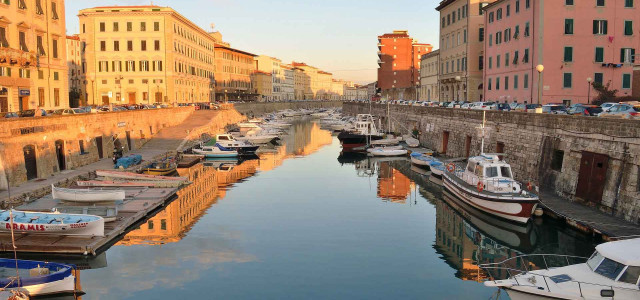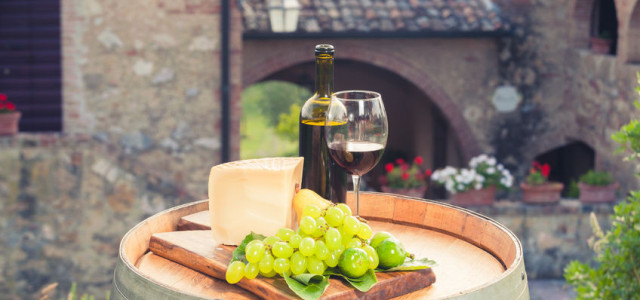The Tomatoes from Belmonte, a "giant" in the kitchen for Summer
A typical product of a village surrounded by the Tyrrhenian Sea
Summary
It seems evident that it is nicknamed "the giant" because of its size. The Belmonte tomato takes its name from the place where it found its ideal habitat - Belmonte Calabro. This place is classified as a characteristic village situated on a hill overlooking a vast aerial view of the Tyrrhenian Sea. It is a small treasure that every year sees its population of about 2000 inhabitants triple during the summer months thanks to the clarity of its waters and the beauty of an almost unblemished past.
It is said that the tomato from Belmonte was imported from America in the early 1900s by a Calabrian emigrant, a certain Guglielmo Mercurio: it seems that he brought along the seeds of this dispro-portionately large vegetable upon his return from the New Continent.
The characteristics of the Belmonte tomato
This tomato has an extremely fleshy pulp and a thin peel. It has the characteristic of being almost seedless and of having a pale pink color with a hint of a more marked coloring towards the lower part, while the ribs almost always remain green. There are two types that are found on the market: the Cuore di Bue - whose oblong shape reminds us of a teardrop and gets larger in the middle (of-ten found with an evident umbone and almost never has a sour pulp) - and the Giant. The first type can go from 400 to 600 grams: the second type, instead, from a kilo to a kilo and a half. Sometimes, even even up to three kilos!
Here is the De.C.O trademark brand
The tomato from Belmonte Calabro is the first Italian tomato to have been crowned with the De.C.O. (Communal Denomination of Origin) title in 2003. This mark was affixed to each individu-al specimen, and also obtained protection from the Ministry of Agriculture, Food and Forestry which included it on the list of Traditional Home Grown Food Products.
How the tomato from Belmonte is cultivated
In the local dialect they are called Pimmaduari e Bellimunte, the tomato from Belmonte - whose seeds are jealously guarded and protected by the local farmers - is grown in open fields at an altitu-de of about 50 meters above sea level. They are usually grown during the period that goes from June to September and at a maximum altitude of 600 meters. This cultivation requires that the plants are placed at a distance of about 50-60 cm from one other in order to allow the natural growth of the fruits without hindering it.
Many neighboring towns have tried to cultivate the Belmonte tomato - wanting to obtain the same results of course - but almost all of the attempts were made in vain: to date there hasn't been a posi-tive outcome, neither with the production nor with the quality.
The Trade of the Giant
On the market we can find a cultivar of the red fruit called Belmonte rosso which is smaller in size than the typical cultivar. This product is watery and lacks firmness. This variety was chosen for commercial reproduction, especially due to the reduced size of the fruit (up to 350 g).
It goes without say, then, that 70 percent of Belmonte's tomatoes are sold throughout the entire province of Cosenza, while only the remaining 30 percent is sent to other regions of Italy where it is mainly used in the high-end catering.
The Benefits of the Fruit
The tomato from Belmonte has very few calories. It is rich in water and lowfat. It is ideal for those who are following a low-calorie diet. It contains a substantial amount of vitamins and minerals. It is rich in vitamins A and C, and to those belonging to the vitamin B and E groups. It can prevent many diseases that are caused due to high blood pressure.
The various uses in the kitchen
In the kitchen, the tomato from Belmonte Calabro lends itself wonderfully to the preparation of tasty and fresh salads which is why this fruit is also called “pomodoro insalataro”.
With these tomatoes, you can prepare an excellent caprese using the Cuore di Bue, sliced fresh mozzarella from La Sila, high quality extra virgin olive oil, salt, pepper and of course - fresh basil. Or you make salads with tomato slices, tuna, salt and slices of red onion from Tropea.
Another option is to cut the Belmonte tomato into slices and place it on fairly large flat platter, then season it all with extra virgin olive oil, coarse salt, oregano, hot pepper flakes and slices of red Tropea onion. It can be compared to bringing a steak to the table, but in a fresh, light, and vegetarian version.
Fried green Belmonte tomatoes
Ingredients for 2 servings
200 grams of green Belmonte “Cuori di Bue” tomatoes
4 eggs
150 grams of type 00 ’flour
300 grams of stale bread
Red pepper flakes
Basil
Oregano
salt
Grated Pecorino
Peanut oil for frying
Preparing the fried green Belmonte tomatoes
Wash the Belmonte tomatoes under running cold water, dry them with a clean cloth and slice them with a sharp knife. After cutting them into slices of about ½ cm each, let them drain. Meanwhile, crumble the stale bread and place it in a preheated oven until brown. Then, place the stale bread in the mixer together with the basil and oregano. Mix the flour, salt, and red pepper flakes together. In a large bowl beat the eggs with the grated pecorino. Then, pass the slices of the Belmonte green tomatoes in the type 00 'flour first, then in the beaten eggs, and finally in the breadcrumbs. Fry the green Belmonte tomatoes in plenty of hot peanut oil, making sure to brown them on both sides. Once the tomatoes are cooked, drain them with a slotted spoon to remove the excess oil and place them on a large serving platter covered with absorbent paper towels.
Buon appetit!
All rights reserved © Copyright Altrama Italia
![Immagine descrittiva - BY [karandaev/123rf] Immagine descrittiva - BY [karandaev/123rf]](https://api.viaggiart.com/resources/images/xl/list/image/171196-06293afc4f6fc2069ad39bdaf46c27b7-1560871909.jpg)






